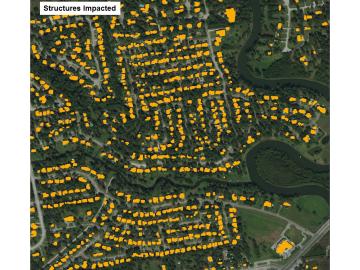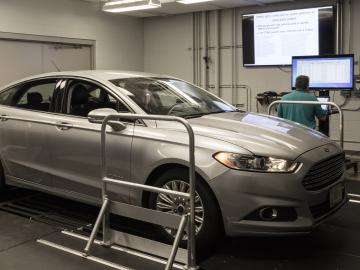
Filter News
Area of Research
- Advanced Manufacturing (1)
- Biology and Environment (6)
- Computer Science (1)
- Energy Science (26)
- Fusion and Fission (2)
- Fusion Energy (4)
- Materials (9)
- Materials for Computing (4)
- National Security (3)
- Neutron Science (8)
- Nuclear Science and Technology (7)
- Nuclear Systems Modeling, Simulation and Validation (1)
- Supercomputing (18)
News Topics
- (-) Advanced Reactors (14)
- (-) Artificial Intelligence (9)
- (-) Clean Water (2)
- (-) Grid (7)
- (-) Polymers (7)
- (-) Summit (17)
- (-) Transportation (17)
- 3-D Printing/Advanced Manufacturing (30)
- Big Data (13)
- Bioenergy (16)
- Biology (7)
- Biomedical (22)
- Biotechnology (2)
- Buildings (1)
- Chemical Sciences (5)
- Composites (2)
- Computer Science (47)
- Coronavirus (25)
- Critical Materials (5)
- Cybersecurity (6)
- Energy Storage (22)
- Environment (36)
- Exascale Computing (5)
- Frontier (1)
- Fusion (14)
- High-Performance Computing (3)
- Isotopes (8)
- Machine Learning (8)
- Materials (2)
- Materials Science (39)
- Mathematics (2)
- Mercury (4)
- Microscopy (9)
- Molten Salt (2)
- Nanotechnology (17)
- National Security (2)
- Neutron Science (38)
- Nuclear Energy (31)
- Physics (15)
- Quantum Science (14)
- Security (3)
- Space Exploration (2)
Media Contacts

Researchers at ORNL demonstrated that sodium-ion batteries can serve as a low-cost, high performance substitute for rechargeable lithium-ion batteries commonly used in robotics, power tools, and grid-scale energy storage.

A novel approach developed by scientists at ORNL can scan massive datasets of large-scale satellite images to more accurately map infrastructure – such as buildings and roads – in hours versus days.

The prospect of simulating a fusion plasma is a step closer to reality thanks to a new computational tool developed by scientists in fusion physics, computer science and mathematics at ORNL.

An international team of researchers has discovered the hydrogen atoms in a metal hydride material are much more tightly spaced than had been predicted for decades — a feature that could possibly facilitate superconductivity at or near room temperature and pressure.

A typhoon strikes an island in the Pacific Ocean, downing power lines and cell towers. An earthquake hits a remote mountainous region, destroying structures and leaving no communication infrastructure behind.

Nuclear scientists at Oak Ridge National Laboratory have established a Nuclear Quality Assurance-1 program for a software product designed to simulate today’s commercial nuclear reactors – removing a significant barrier for industry adoption of the technology.

To better determine the potential energy cost savings among connected homes, researchers at Oak Ridge National Laboratory developed a computer simulation to more accurately compare energy use on similar weather days.

Researchers across the scientific spectrum crave data, as it is essential to understanding the natural world and, by extension, accelerating scientific progress.

Geospatial scientists at Oak Ridge National Laboratory have developed a novel method to quickly gather building structure datasets that support emergency response teams assessing properties damaged by Hurricanes Harvey and Irma. By coupling deep learning with high-performance comp...

A new Oak Ridge National Laboratory-developed method promises to protect connected and autonomous vehicles from possible network intrusion. Researchers built a prototype plug-in device designed to alert drivers of vehicle cyberattacks. The prototype is coded to learn regular timing...


